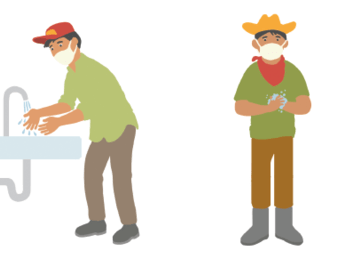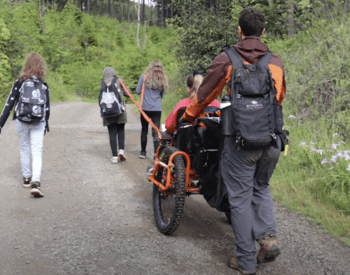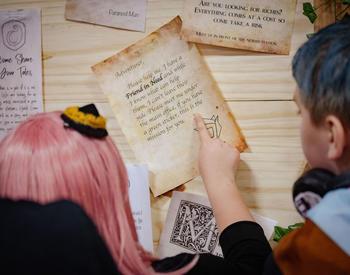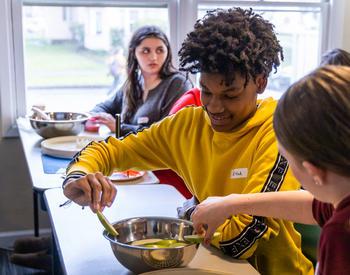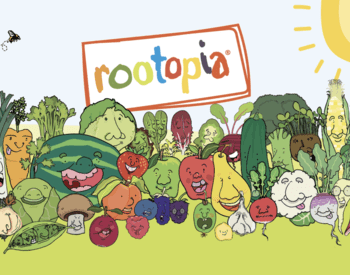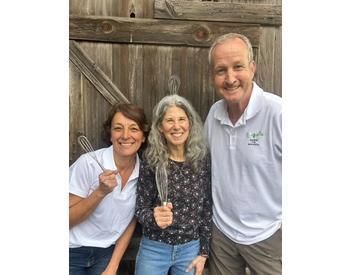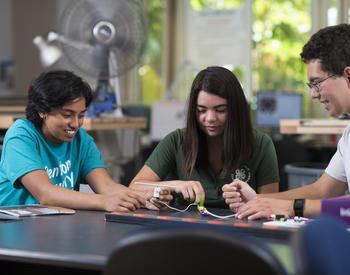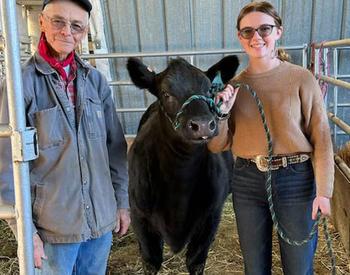Transcript
There's a mineral that comes from earth called gypsum, and if you heat it up really hot, it dries it out, turns it into a really fine powder. I gotta show you some really cool things you can do with that fine powder today. I'm Pat Willis with 4-H in Washington County. Here's a list of supplies you're going to need for this great activity. That dried gypsum is actually Plaster of Paris. You might not have this at home, but you can get it at Fred Meyers, Ace Hardware, those types of places. Another thing you'll need is some kind of container to put the plaster in and mix it up, and some kind of stir stick, not a spoon, any kind of stick or even a ziploc bag works really good too, we can show you that. The other thing you'll need is some kind of form, like cardstock or paper with a paper clip. Sometimes I'll take these two-liter bottles and just cut them into about one or two-inch strips with a pair of scissors, nice and easy. And something to clean up with, a whisk broom works good or a paintbrush, even a toothbrush, anything like that. And the last thing you need is just plain old tap water to carry out with you in the field. And we will see you outside.
Plastercast: All right, we're outside here, and now I was looking for some tracks in our backyard but really didn't see any, so we're gonna make one up here. We have a horseshoe pit right here with some nice sand in it and our dog Boo Boo, and she just loves this stuff. We will push your foot down into the soft sand and make a nice little track impression with that. So that's just right, Boo Boo, good dog! Now, I'm gonna use one of those rings I showed earlier, we'll push that around the track. It was just right and it makes turn out really nice when you do that. Good dog. And now take the plaster, use about on this one, I'm using about 2 cups of plaster and you end up doing about a cup of water to get it just right. We'll stir it up with some water right here. You don't want to put too much water in and get it too runny. We want it just right, about the thickness of pancake batter so when you pour it into the tracks, it fills all the cracks and crevices of that impression in the sand. It's better to have a little less water than more. Boo Boo is really looking forward to this. That'll be just about right. Just pour it into the track, try to get as much of it out as you can. You do this after about five or ten minutes after you mix up the water and plaster otherwise it will just harden up in your container. Boo Boo is a big help.
Tiki Vase: But you can do this inside too. All kinds of good art projects you can do with plaster and what I want to do is make a plaster cast of a kind of a tiki vase here. And I've had some nice soft sand, I brought in a little water to make it a little bit moist that way and I just gotta press this down into the sand to get a nice impression. Do that. Oh, that's nice, that would be good. And I got to use plaster instead of in a container just in a ziploc bag. It's really nice for taking in the field. It's about 2 cups of plaster and about a cup of water. You got some water, you're gonna pour it in here and I'm gonna stir it up just by hand inside here like this. Hold the ziplock bag and kind of mix it up. And We're not going to use a circle to go around is because a little too big for our circle but just pour a great big track there are quick. Little too thick yeah and you have to do this once you pour the water in there probably at about five minutes maybe 10 minutes at the most because it'll start to harden up. So when you're out in the field you carry your water separately and your plaster separately when you're doing your tracks. That's probably right like pancake batter. What I like to do is kind of get it down on one end, I'll actually just tear a hole in the ziplock bag in a corner if I can. And then we will squirt it down inside here, almost like when you're making, you know, cake decorating, you can just put it down in here and across the entire track. That came out cool. Oh yeah this would be great and we're going to liquefy it or knead it like we did before. I'm just going to take the top of the plaster bag, watch this, I'll just kind of wiggle it a little bit. See how that wiggles like that. They liquefies it and it gets it down on all those cracks and crevices without touching the sand and moving the sand around. It's really great. So we'll let that harden up for about 20 minutes and hold out and clean it up. Okay here we are back at Boo Boo's track. On a good sunny day so it should take twenty minutes, we gave it an hour because it is windy out. What I like to do is pick these up, now be gentle, I kind of push underneath the sand like this and pull it out like that. Then clean it up off the bottom with a whisk broom. And that works pretty good. If you don't have that, sometimes a paint brush works fine. Gets down to the cracks. So there is Boo Boo's track, I will show you a couple other ones we have. That's your plaster cast. All right, we brought these in from the field, they're hardened up now and but if you want you could wait a full day and actually run them underneath the sink or a faucet if you want to clean them up a little bit more. But these plaster casts they're a great way of collecting data in the field, still used today as part of a science projects. But you can, well, I like to record where I found it, what it was, and I even paint them and it's a great art project too. Hey Willis? Yeah? Why does my toothbrush taste like dirt? I have no idea...
Discover how a naturally occurring mineral like gypsum can be used to collect data for science and make cool art projects! Pat talks about how you can use Plaster of Paris to create track imprints.




